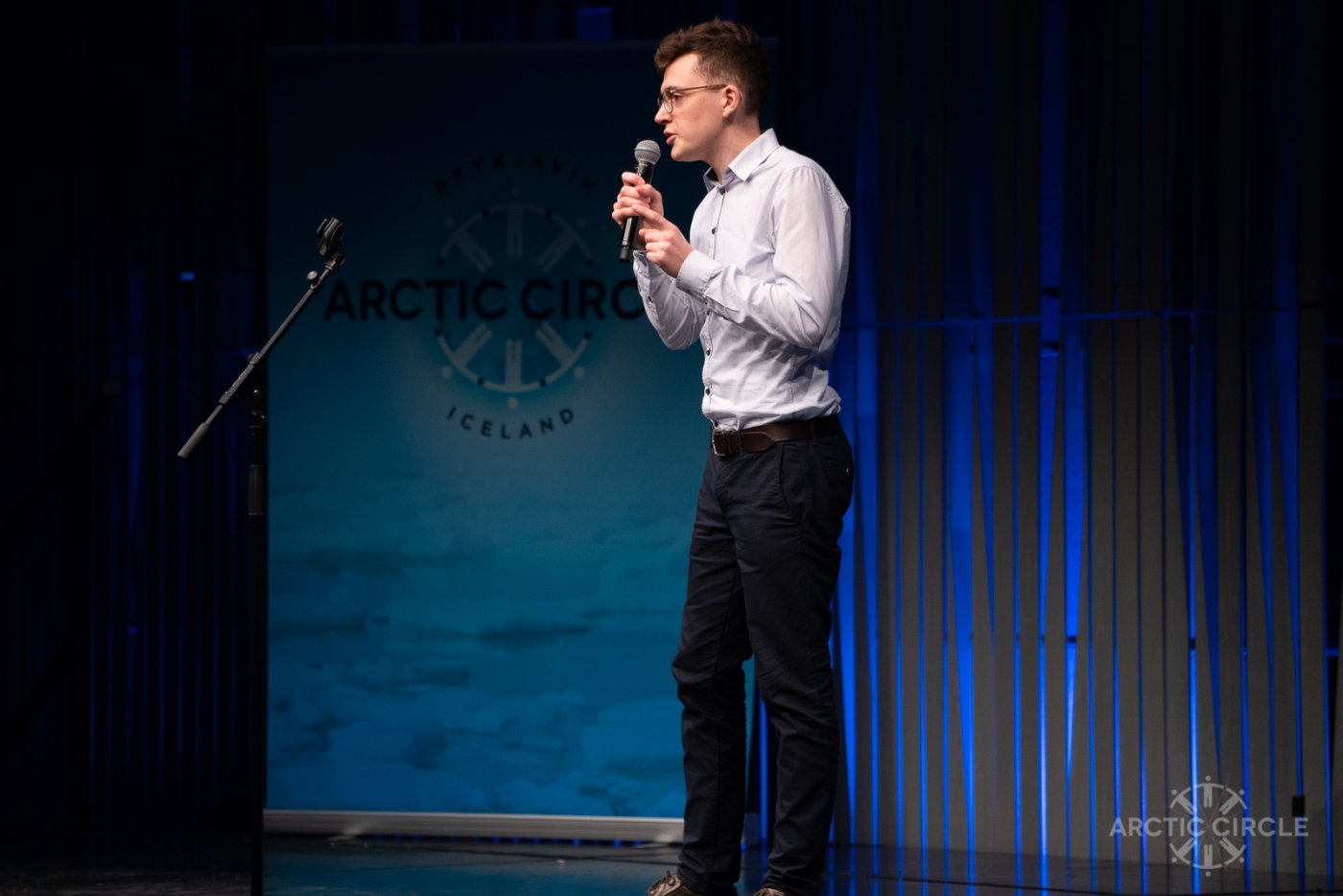“It’s the year 2050. The Arctic is now – for the first time in human history – considered ice-free. This seems quite worrying – but it also creates new opportunities. Arctic oil and gas has been accessible for decades, yet – the reserves have remained untouched. Why is that? Let’s imagine we are there – in the summer of 2050 – somewhere between Svalbard and Greenland. What do we see? Instead of oil platforms we see a large fleet of maybe 100 ships. It is an awkward sight. They do not really seem to have a purpose and they move very slowly. This is where it gets exciting. We just saw a fleet of floating power plants.”
This is the way Stuart Daniel James, master´s student in the Environment & Natural Resources interdisciplinary graduate programme began his winning pitch presentation at the Arctic Innovation Lab. The event was a part of the Arctic Circle Assembly in Harpa Concert and Conference Centre earlier this autumn.
The Arctic Innovation Lab is a competition organized in partnership with the Harvard Kennedy School of Government, the Iceland School of Energy at Reykjavík University, University of Greenland, the Fletcher School at Tufts University, and the University of Iceland. It aims to educate students about this fast-changing region and its impacts on the rest of the globe, and to equip them to contribute to developing and implementing sustainable solutions for the region.
Fifteen students from the Harvard Kennedy School, Iceland School of Energy at Reykjavik University, University of Greenland, the Fletcher School at Tufts University, the Massachusetts Institute of Technology, the University of Iceland, and the Moscow State Institute for International Relations participated in the Arctic Innovation Lab this year and each of them was given two minutes to pitch their idea at the conference on how to do things better in the Arctic.
Stuart Daniel James' pitch, which was voted the best in this year´s Lab, revolves around harnessing the strong Arctic wind instead of oil.

Stuart´s pitch, which was voted the best in this year´s Lab, revolves around harnessing the strong Arctic wind instead of oil. “Basically, I got in touch with this idea of "Sailing Energy" at my old university - the TU Darmstadt in Germany. It originates from Professor Michael Sterner and his student Thomas Raith. They did a first feasibility study back in 2013 and had shown that there is some great future potential for the technology“, says Stuart and adds: „When I was asked by Bjargey (Anna Guðbrandsdottir, programme coordinator for the Environment & Natural Resources interdisciplinary graduate programme) whether I would like to present a pitch at the Arctic Innovation Lab this technology popped back into my head.“
The idea is quite simple but clever. „We basically have a ship that is powered by wind and pushed through the ocean. Underwater, there are some hydro turbines attached to the ship’s hull. These generate electricity which is used to produce hydrogen in an electrolyser in the ships body. It is finally stored there and once the tank is full it will be discharged at discharging stations in harbours“, Stuart adds and notes that the technology is a mix of different well-known technologies integrated into a whole new system.
Stuart has a bachelor´s degree in Mechanical Engineering from the Darmstadt University of Applied Sciences, started a Mechanical Engineering master’s degree at the TU Darmstadt and came to Iceland last year as an exchange student. At the University of Iceland, he got to know the Environment & Natural Resources interdisciplinary graduate programme and decided to change course. He is now enrolled in that programme with specialisation in Renewable Energy - Energy Economics, Policy and Sustainability.
The idea he presented at the Arctic Innovation Lab has close connections to both of the subjects he has studied. “It’s a fully green technology and there is no risk of an oil spill. I actually believe that "Sailing Energy" is especially well-suited for remote Arctic regions such as Svalbard due to them being remote yet easily accessible by the sailing energy ships. These regions are currently facing great changes in their energy supply as I learnt in one of the Arctic Circle’s breakout sessions. The coal mine in Svalbard is about to close within the next ten years. In such remote areas energy prices are already very high. That’s why I believe that “Sailing Energy” could really make a difference here.”




